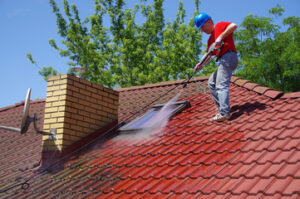Injection molding is the process of inserting thermoplastic into a mold to form a finished product. It’s a complex process that requires careful engineering and consideration of the final product.

A number of common plastic injection molding materials are available to manufacturers, and each offers its own benefits and drawbacks. Choosing the right material for your project can help reduce overall production costs and minimize potential defects during manufacture. Read on Injection Mold Plastic Material Florida for more information.
Polycarbonate is a strong, durable plastic that can resist high impact and extreme heat. It can also be made to be clear, which makes it a good choice for parts that require transparency or clarity, such as hard-hat visors or medical equipment enclosures. It can be molded into parts with complex shapes and intricate designs. However, it can be difficult to process because it requires higher heating temperatures and a lower melt flow rate than some other injection molding materials.
Injection molds for Polycarbonate are often made from a hardened steel or beryllium-copper alloy, and the machining process is usually completed with Computer Aided Design (CAD) software. This software defines the mechanical dimensions of the mold and converts them into manufacturing instructions for the CNC machine.
During the injection molding process, Polycarbonate is heated to its melting point and then injected into the mold at high pressure to fill it completely. The injected material is then left to set for a period of time, which can vary according to the product. This process ensures that only smooth fluid is injected into the mold, eliminating defects like air bubbles and cloudiness.
Polycarbonate is a highly versatile injection molding material that can be used for a wide range of applications, including automotive and electrical equipment. It is extremely durable, able to withstand temperatures up to 500 degrees Fahrenheit, and is resistant to many chemicals. Depending on the application, polycarbonate can be reinforced with glass or other materials to improve its strength and performance. It can also be coated with UV stabilizers to prevent degradation or hazing.
Polyethylene terephthalate (PET)
PET is a thermoplastic polymer that is very popular for use in bottles and containers because of its clarity, strength and durability, and lightweight properties. It’s also recyclable and has good chemical resistance. It can be molded using a variety of plastic injection molding processes, including extrusion and injection molding.
PET has excellent flow characteristics, which make it easier to mold intricate parts with fine details. Its rapid solidification upon cooling helps to achieve the desired mechanical properties of the molded part, as well as dimensional stability.
Injection molding of PET involves heating the raw material to a molten state and then injecting it into a pre-designed mold under high pressure. The molded part is then cooled and ejected from the mold. The injection molding process is a relatively quick and cost-effective method for producing large quantities of molded plastic parts.
To make PET more useful, it can be reinforced with glass fiber or other additives for improved strength and rigidity. Adding these fillers can also improve the temperature stability of PET, which makes it suitable for use in demanding applications such as automotive or medical products.
High-density polyethylene (HDPE)
High-density polyethylene (HDPE) is a popular choice for injection mold plastic due to its versatility and durability. It’s lightweight, inexpensive, chemically resistant, and FDA-approved for food contact applications. It also melts easily and molds with excellent fidelity. It can be used in a wide variety of industrial and consumer products.
Injection molding is a process that involves injecting molten HDPE into a custom-made mold to produce specific shapes. The plastic is heated to a high temperature inside of a heating barrel, mixed with a screw and injected into the mold using a pressure system. The molded part is then cooled and ejected from the mold using a mechanism called an ejector pin. The entire process is fast and produces high-quality products that are designed to meet your exact specifications.
HDPE is petroleum-based and flammable, but it’s available with flame-retardants to reduce its flammability. It can be used in a wide range of applications, including automotive parts, containers, and household goods. It’s also highly durable and easy to recycle.
Injection molding can be done with virgin or recycled plastics. Recycled HDPE is more cost-effective than virgin HDPE and contributes to environmental sustainability by decreasing plastic waste. It’s also an excellent alternative for products requiring high strength and impact resistance, such as beverage bottles, car bumpers, and industrial machinery. It’s even suitable for sanding and coating, which can enhance its appearance or function.
Low-density polyethylene (LDPE)
LDPE is one of the most common plastic materials. Its low cost and good impact resistance make it popular for packaging films, bottles, and containers. Its flexibility and transparency make it ideal for injection molding applications. It also offers excellent electrical insulating properties and is often used for wires and cables. It is very easy to process and mold. LDPE is produced by stringing together ethylene molecules. The material is also available in different grades with varying properties. Some grades are clear, while others are a light color. It is important to choose the right grade for your application.
Injection molded LDPE is commonly used for housewares, toys, and food containers. It has excellent chemical durability and is able to withstand high temperatures. In addition, LDPE can be easily recycled. However, a high level of moisture or chemicals can damage the material.
To study the effect of injection-molding conditions on LDPE microstructure and crystallinity, a number of experimental samples were injected under different barrel and mold temperatures. The resulting specimens were characterized by scanning electron microscopy and X-ray diffraction analysis. The results showed that the spherulite size increased with the barrel temperature, while the crystallinity presented higher values at an intermediate mold and a low melt temperature. The findings of this study are valuable for establishing empirical relationships between the microstructure and crystallinity of LDPE and its processing conditions.
Acrylic
Acrylic is a transparent thermoplastic, also known as PMMA or plexiglass. It’s commonly used as a lightweight substitute for glass and is also known for its flexibility, strength, and resistance to chemicals. Acrylic is also recyclable, which aligns with sustainable manufacturing practices.
The production process of acrylic requires a special set of tools that include injection molding machines and molds, as well as raw plastic materials. The plastic is injected into the mold, where it cools and solidifies to create the finished product. This method of manufacturing is designed to produce vast quantities of components. It is a cost-effective alternative to other production methods, such as CNC machining or 3D printing.
Polystyrene is another popular injection mold plastic material. It’s an aromatic polymer derived from the chemically bonded monomer styrene. It’s a versatile material that can be molded into a variety of shapes and sizes. It is often used to preserve collectables and to make showcases. It is also an inexpensive material and can be found in many low-cost consumer goods, such as CD cases, razor blades, and license plate frames.
Polypropylene is a semicrystalline thermoplastic that’s one of the most flexible plastics. It’s highly resistant to heat, moisture, and corrosion and is an excellent choice for food storage and packaging. It can also be combined with a wide range of other materials. This makes it a versatile choice for a variety of applications, including automotive parts, sports equipment, and household appliances.
ABS
ABS is one of the most common injection molding plastics. It is easy to shape and durable, and it’s resistant to chemicals and heat. It’s also recyclable and inexpensive, making it a good choice for many products. ABS is used in plastic toys, electrical components, and kitchen utensils. It’s not the best choice for outdoor applications, but it can be made more weather-resistant with additives.
During the injection molding process, plastic pellets are heated to a molten state and then injected into a mold where it solidifies. Injection pressure, melting and mold temperatures, cooling rate, and injection machine quality all affect the final quality of the finished product. Injection molding experts can help you select the right material and process for your project.
Injection molded ABS parts should have consistent wall thickness to prevent stress concentrations and reduce defects. The walls should also be designed with a draft angle to facilitate ejection from the mold. A draft angle of 0.5-1° is recommended.
The molded ABS must be thoroughly dried to eliminate moisture and avoid defects. If the plastic is overheated, it may degrade or develop brown marks. Brown marks on a molded part are a sign that the injection molding process is not under control. This can lead to warping and shrinkage, which can result in a finished part that doesn’t meet design requirements. This problem can be avoided by working with a company that has professional mold manufacturing equipment and an experienced injection molding team.

